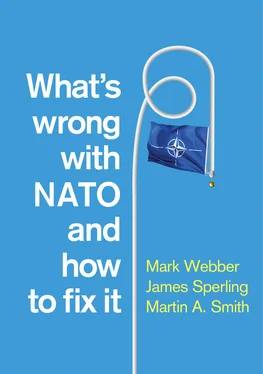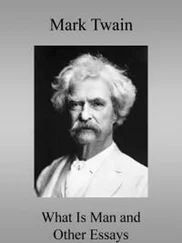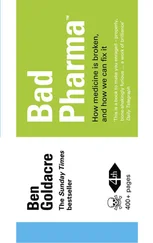32 32. Robert O. Keohane, ‘International Organization and the Crisis of International Interdependence’, International Organization, 25(2), 1975, pp. 357, 359.
33 33. Hugh Miall (ed.), Redefining Europe: New Patterns of Conflict and Cooperation (London and New York: Pinter Publishers, 1994).
34 34. Edward Newman, A Crisis of Global Institutions? Multilateralism and International Security (London and New York: Routledge, 2007), p. 21.
35 35. See, for instance, Julian Lindley-French, NATO: The Enduring Alliance 2016 (Warsaw: Foundation for Polish–German Cooperation, 2016); R.N. Burns and J.L. Jones, Jr, Restoring the Power and Purpose of the NATO Alliance (Washington, DC: Atlantic Council 2016); J.R. Deni, NATO and Article 5: The Transatlantic Alliance and the Twenty-First-Century Challenges of Collective Defence (Lanham, MD: Rowman and Littlefield, 2017); John Andreas Olsen (ed.), Future NATO: Adapting to New Realities (Whitehall Paper 95) (London: Royal United Services Institute, 2020).
Part I Problems
CHAPTER ONE Doing Too Much: The Problem of Task Proliferation
NATO’s first major ‘ill’ – doing too much – is arguably a problem of success. Three of NATO’s seven decades have fallen within the post-Cold War period, and it has accumulated a wide range of functions in consequence. Such adaptation and repurposing is clearly preferable to stasis and irrelevance. But accumulating more and more functions, with multiple institutions, policies and new members and partners to match, has also stored up problems. Taking on an extra commitment may seem logical in isolation, but when these multiply it can result in a dissipation of energy and a lowering of effectiveness. The magnitude of NATO’s problem is, therefore, not to be underestimated. Here we outline its various aspects. In Chapter 5, we offer some routes by which the problem can be addressed.
NATO, so the well-worn saying goes, was created to keep ‘the Russians out, the Americans in and the Germans down’. Attributed to NATO’s first Secretary General, Lord Ismay, this summary indicates that even during the Cold War, the Alliance had a broad remit. NATO also developed features unusual in a traditional alliance, establishing procedures for political consultation, scientific cooperation and disaster management. Yet for all this, the Alliance’s defining objective was to balance and deter Soviet power. Here, as the 1974 Declaration on Atlantic Relations put it, ‘the common defence’ of NATO equated to ‘the defence of Europe’ alongside the airand sea-space on the continent’s flanks – in the north Atlantic and the Mediterranean. 1
This continental focus did not go unquestioned. During the 1950s, a debate unfolded on the possibilities of a global NATO. Secretary General Paul-Henri Spaak, French President Charles de Gaulle and deputy Supreme Allied Commander Europe Field Marshal Bernard Montgomery all argued that the Alliance should assume responsibilities beyond the defence of Europe. Fading colonial powers Portugal, Belgium and the Netherlands, meanwhile, felt the NATO allies should coordinate their activities at the United Nations. 2In the face of American indifference, however, such ideas came to nothing. The US was at times frustrated at the reluctance of its allies to lend their support to its military campaign in Vietnam or to the defence of Israel, but it did not envisage NATO as a vehicle to pursue the global competition with the Soviet Union (or, for that matter, the People’s Republic of China). Consequently, there was no agreement on a role for the Alliance ‘out-of-area’. When the allies went to war – the Belgians in the Congo, the Americans in Vietnam, the French in Algeria or the British over the Falkland Islands – NATO was not involved. And while the Alliance was busy organizing the collective defence – through force planning, standardization, exercises, air and naval patrols, territorial defence, communications, command structures and so on – not once did it conduct a mission involving force. ‘Throughout the entire period of the Cold War,’ the Alliance website notes, ‘NATO forces were not involved in a single military engagement.’ 3
The narrow predictability of NATO’s position was turned upside down by the end of the Cold War. We shall say more on this historic moment below, but in short, the Alliance proved able to move with the times. The Soviet Union – or what would soon become Russia – was downgraded as a threat and NATO foresaw greater opportunities for dialogue and cooperation with its erstwhile adversary. In parallel, NATO’s strategic mission was modified. The Alliance, the new Strategic Concept of 1991 declaimed, would proceed from a ‘broad approach to security’, embracing for the first time crisis management alongside collective defence. 4Having made this leap forward, NATO has in the intervening years been involved in a constant process of change. Since the Cold War’s end, the Alliance has nearly doubled its membership; has developed partnerships with over forty countries around the world as well as with the EU (in 1990, the partnership concept didn’t even exist); has added cyber and space to its domains of operations alongside land, sea and air; has run major operations in Afghanistan, the Balkans, Libya, the Mediterranean Sea and elsewhere; has developed a counter-terrorism remit; and following the 2014 Ukraine crisis has repositioned itself to counter the rising threat from Russia. In a significant step, NATO’s 2019 London Declaration pointed to a potential new role in addressing ‘China’s growing influence’. 5The Alliance has thus taken on many new – and simultaneously held – tasks. Such ‘pragmatic functionalism’ means NATO has been able to stake a claim to international relevance in a fluid security environment, while at the same time meeting the needs of a diverse membership, and steering toward the priorities of its leading state, the US. The Alliance, in other words, has survived because it has found ‘new things to do’. 6Indeed, it keeps on finding new things to do. To adapt, innovate and prepare for the future is why, to its defenders, NATO is ‘not only the longest lasting alliance in history. It is the most successful alliance in history.’ 7
But the accumulation of tasks also has its downsides. NATO has taken on more than it can cope with and it makes claims to competence it cannot possibly fulfil. This problem of ‘overload’ was identified by the political scientist Anthony King back in the mid-1970s when analysing the growing demands placed upon domestic governments. 8It is a problem that also applies to international organizations. Overload has informed much of the debate on NATO’s post-Cold War evolution. As the Alliance has moved forward, scholars, think-tank analysts and politicians have lined up either to praise its adaptive creativity or to warn against over-stretch and a dilution of purpose. The latter position focuses on the downsides of NATO’s acquisition of new tasks, and its absorption of new members through enlargement.
During the 1990s, NATO took decisive steps on both counts. It adopted the Partnership for Peace (PfP) programme in January 1994, launched an air campaign and peacekeeping mission in Bosnia, signed the Founding Act with Russia in May 1997, and in 1999 welcomed the Czech Republic, Hungary and Poland as new members. In March 1999, meanwhile, NATO launched Operation Allied Force (OAF) – a seventy-eight-day aerial bombing campaign that dislodged Serbian forces from Kosovo. The Alliance was thus in the thick of the action, but as the decade ended, some observers argued that it was now doing too much. NATO, Michael E. Brown argued, had become ‘preoccupied with activities unrelated to vital interests’. The high costs of military operations and the likelihood of serial failures, he suggested, threatened to inflict ‘irreparable damage’ upon it. 9
Читать дальше












